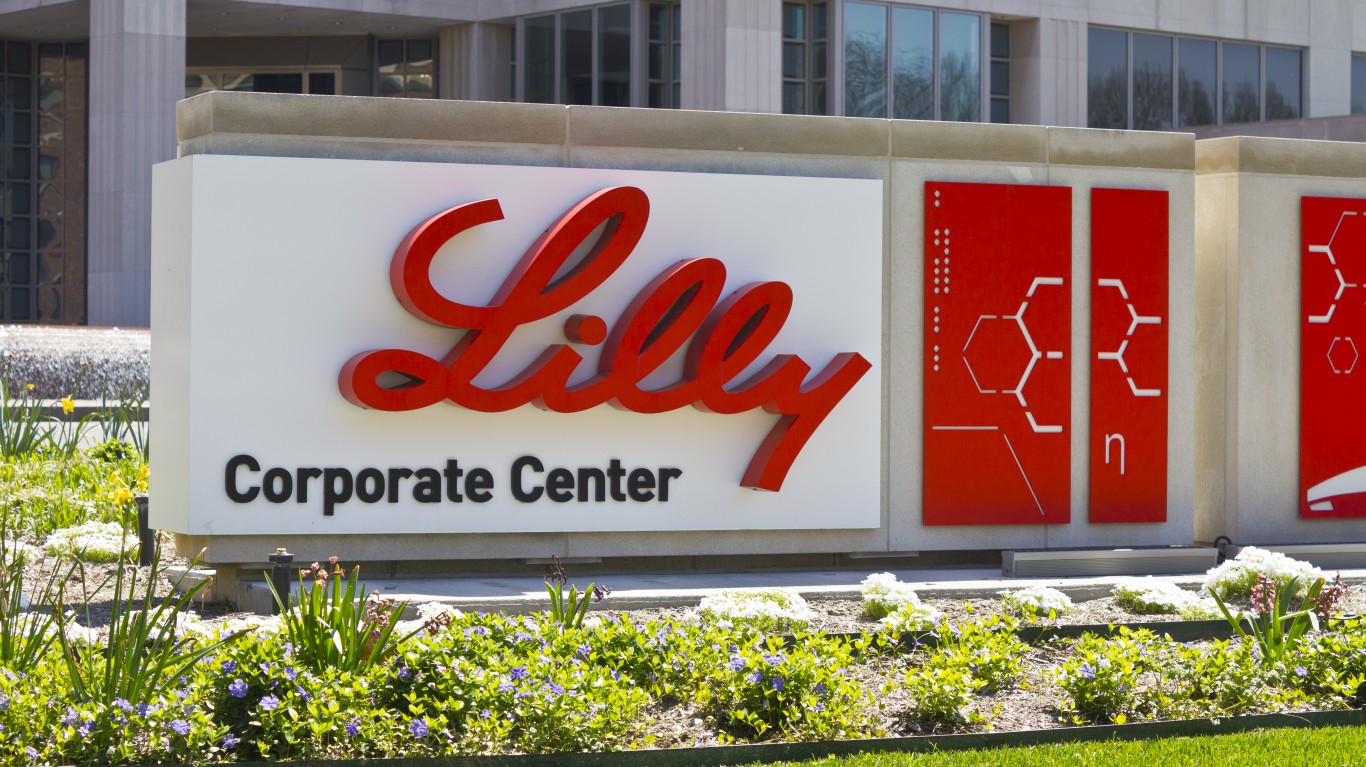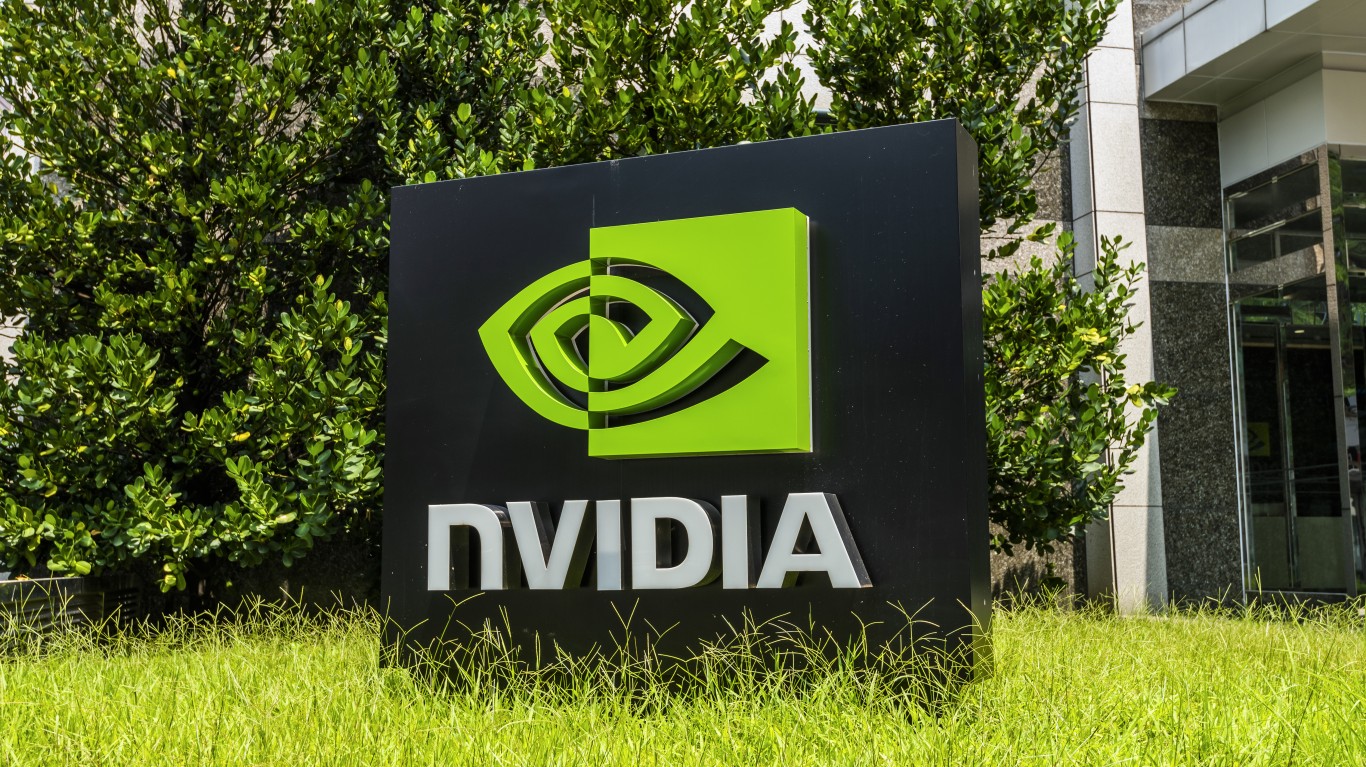
The competition between Nvidia Corp. (NASDAQ: NVDA)) and Advanced Micro Devices Inc. (NASDAQ: AMD) has been intense for the past few years. Nvidia got off to a better start, but AMD has picked up some ground over the past two years.
Since June 2017 Nvidia stock has added just over 140% while AMD stock is up by more than 350%. Over the past two years, Nvidia shares have gained about 36% to AMD’s 230%. Since last June Nvidia stock is up about 75% while AMD stock is up about 150%. The S&P 500 is up about 5.6% over the past 12 months.
But for all of AMD’s gains, Nvidia still has a larger market cap. The company’s market cap is now right around $222 billion, compared to AMD’s total of about $63 billion.
AMD CEO Dr. Lisa Su has been amply rewarded for the company’s soaring stock price. She was the highest paid CEO in a recent Associated Press survey with a 2019 compensation package worth more than $58 million. All but about $3 million came in the form of stock and options grants.
Jensen Huang, Nvidia’s CEO, is expected to earn $11.5 million, down from $12.6 million a year ago. Compared to a median worker at Nvidia, Huang’s compensation package works out to a pay ratio of 64 to 1. AMD’s Su’s pay ratio to that of a median employee was 604 to 1 in 2019 but would have been 172 to 1 excluding the bonus stock grants.
How Intel Got Left Behind
Both Nvidia and AMD design their CPUs (central processing units) and GPUs (graphics processing units) but outsource manufacturing to Taiwan Semiconductor Manufacturing Co. Ltd. (NASDAQ: TSM) and Samsung, among other companies. These chip manufacturers have raced ahead of Intel Corp. (NASDAQ: INTC) in process technology.
While Intel still relies on older 10 nanometer (nm) technology, TSMC and Samsung have been making 7 nm chips for nearly two years and both expect to initiate the 5 nm process next year. In a computing universe where smaller is always better, Intel has stumbled and is expected to remain about 18 months to two years behind by the end of 2020.
AMD got a jump on Nvidia this year, contracting for much of TSMC’s 7 nm capacity while Nvidia went to Samsung, where pricing was better. Unfortunately for Nvidia, delivery was not better.
In 2021, Nvidia is going back to TMSC but this time for 5 nm products. AMD will be hoping fora strong market for Sony’s new PlayStation 5 and Microsoft’s coming Xbox X. Both are due to hit the shelves in time for the 2020 holiday season.
Fighting for the Data Center
One of AMD’s strengths over the past few years has been its wide adoption as a server CPU in the massive data centers that have grown up to support cloud-based computing. The company still holds a strong lead in that market.
Rather than attack its rival head-on, Nvidia acquired a company — Mellanox — that offers high-speed connectivity to geographically distant data center businesses. With Nvidia’s strong presence in the graphics segment, the addition of Mellanox is expected to make the combined company more competitive in this lucrative market.
Nvidia also generates solid gaming revenue from its GPUs, but the desktop market for high-end GPUs is getting smaller as more people decide they have as much chance of being a big-league gamer as they have of being a big-league soccer player.
Partners in Artificial Intelligence
Just a week ago, AMD and Nvidia announced that Nvidia’s latest artificial intelligence (AI) system, the DGX A100, would incorporate AMD’s second-generation EPYC chips. AI demands enormous amounts of computing power, graphics processing power, random-access memory, and networking speed. Nvidia holds on to two of those four elements in the DGX A100.
It will be interesting to see how soon AMD’s new server chip, code-named Milan, will appear in a new version of Nvidia’s AI systems. Or will Nvidia supply AMD with the GPUs for an AMD-branded system? That’s possible, of course, but unlikely. Nvidia has more to lose than to gain from sharing out its GPU technology.
Will Nvidia Retain Its Grasp on GPUs?
AMD is launching a serious challenge to Nvidia’s long-standing primacy in the graphics processing sector. The company’s latest and greatest graphics processor, the Radeon Pro VII GPU, is aimed squarely at the artificial intelligence (AI) and machine learning market where higher performance is the never-ending goal.
The new Radeon chip reportedly will be priced at around $1,900. Nvidia’s comparable Tesla V100 has a list price of more than $10,000. The Tesla V100 GPU is a more powerful processor than the Radeon, but is it nearly 10 times better?
For high-performance computing applications, price is often no object unless the cheaper alternative is also faster. Back in the day, the selling proposition was simple: twice the performance at half the price.
What Analysts Expect for the Second Quarter
Nvidia is tentatively scheduled to report second-quarter results in mid-August. Analysts are looking for earnings per share of $1.97, up from $1.24 in the second quarter of 2019. Revenues are forecast to rise from $2.58 billion a year ago to $3.65 billion this year.
For the company’s 2021 fiscal year, analysts are expecting earnings per share of $8.12 compared to $5.29 for the last fiscal year. Revenues are expected to rise from $14.64 billion last year to $17.2 billion.
As of March, Wall Street had 21 Buy or Strong Buy ratings on Nvidia stock and another dozen Hold ratings. Among recent ratings and price target announcements, Oppenheimer reiterated a Buy rating and its price target of $400. Morgan Stanley reiterated an Overweight rating and raised its price target from $282 to $363.
With a consensus price target of around $385 and the stock trading at around $363, the implied upside to investors is just over 6%.
By comparison, AMD trades just a few pennies below its consensus price target of $53.89. Analysts expect AMD to post larger increases in both earnings per share and revenues (north of 20%) than Nvidia (around 18%).
The wild card here is how well the Mellanox acquisition performs. If Nvidia stomps all over those estimates with a big showing from Mellanox, the company’s stock could really break away. If Nvidia meets or barely beats expectations, then AMD and Nvidia will continue to travel in tandem until one or the other makes a big noise in earnings or revenues.
One last advantage for Nvidia shareholders is that the company pays an annual dividend of $0.64, equal to a yield of just 0.18%. That amount won’t win many investors, but sharp growth could lead to an increase next year. AMD doesn’t pay a dividend.
Thank you for reading! Have some feedback for us?
Contact the 24/7 Wall St. editorial team.





